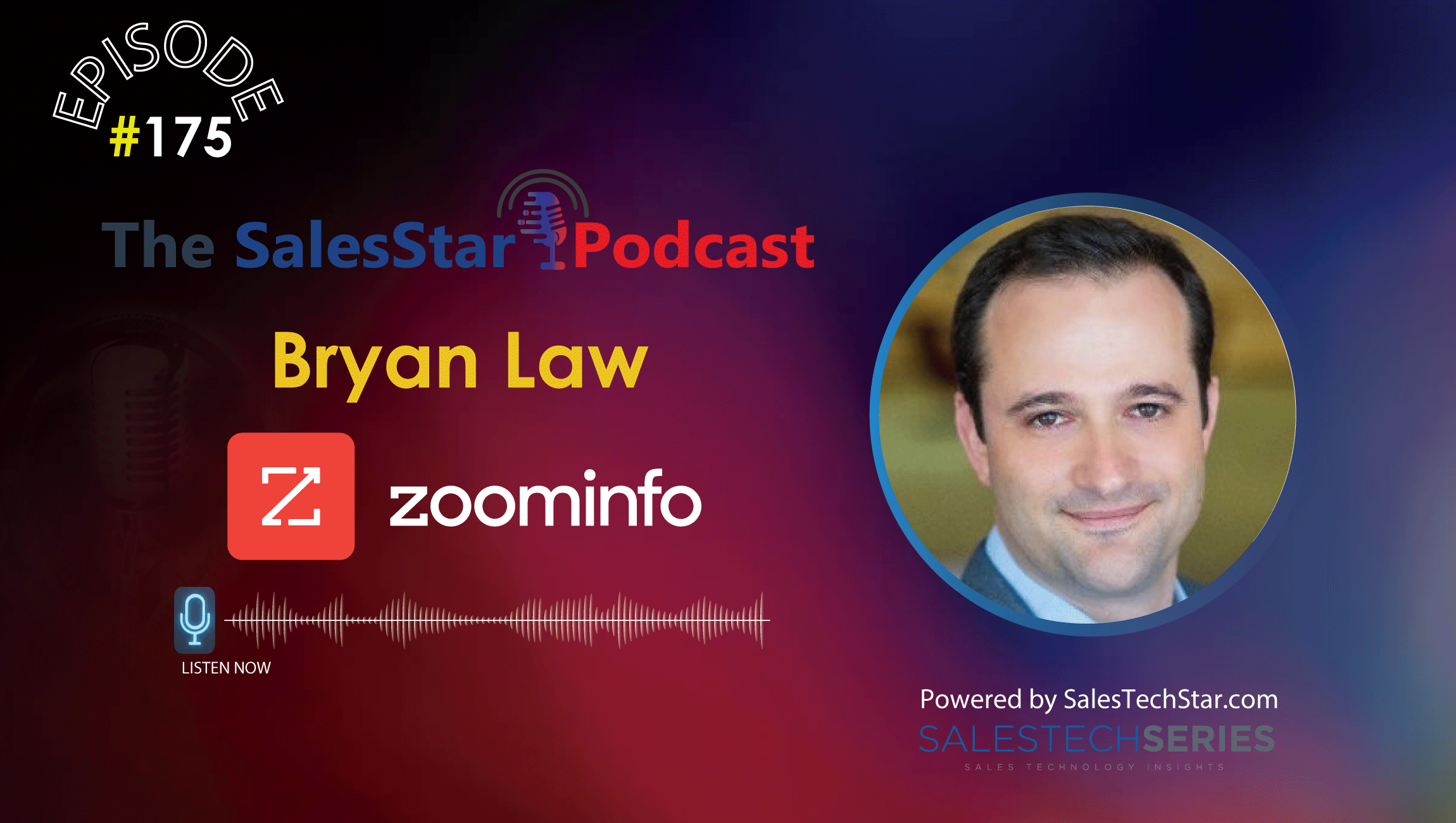In a recent episode of The SalesStar Podcast featuring Bryan Law, CMO at ZoomInfo, Bryan shared key insights on driving GTM and Marketing best practices for B2B technology marketers.
Catch the complete Podcast here:
Here are Some Key Takeaways from the Conversation:
Core Marketing Concepts That Work in B2B Tech
Marketing’s role is to be a key driver for a brand.
One way is to focus on demand generation and the other is growing the brand image so it helps the team over time.
The third piece lies in creating an optimal customer experience that helps a brand maintain a differentiated position in the market.
This is where marketers need to work hand in hand with other functions like sales, customer support, after-sales, operations, to tie into shared goals and processes. This is what can fuel the next steps in terms of what to evaluate further as a shared measurement tactic and what to have less focus on.
What this can also do is help in building better end-to-end execution models.
Read More: SalesTechStar Interview with Kelli Hobbs, VP of Business Development, Valuedynamx
Go-to Market Fundamentals For B2B Tech Marketers
The concept of mental availability is key here. The biggest way to drive growth is to understand the buying emotion of your target audience and learning how you can attach it to your brand. This is what can then push the overall marketing and Go-To-Market experience.
Choosing and measuring your ABX and GTM Process is crucial to knowing what’s working on the other side.
The frameworks that work in B2B tech today revolve around having a cohesive ABM and GTM process.
Marketers are often confused about measuring and implementing this well.
Research suggests that across sales and marketing, the best way to outpace your peers is to build coordinated and programmatic efforts and build a consistent buying motion. The best way to do that through a combination of capabilities.
Focus on the fundamental areas like:
- Data and Insights
- Engagement coordinated across the right channels
- Do both in a more programmatic, real-time manner
From a data perspective, marketers usually have data in a lot of different places and both teams (sales and marketing) look at data differently. Putting your data together and sharing a common vision and integrating systems can help unify all of this.
Boosting engagement across emails, social media and other channels to create a true sense of the integrated experience is what most marketers still find challenging.
Marketers may feel they have an integrated process in place, but in reality it’s often not the case.
Driving your automation and reports in real-time is essential to putting all of this together.
The importance of being real-time is wildly valuable today. This also helps a marketing team scale faster based on current market dynamics.
What Matters When It Comes to Using and Segmenting your First-Party Data?
In most cases, there are way more tools being adopted than a team needs. Whatever you use, if it’s not integrated, it won’t work.
It starts with what process you want to achieve and then working backwards to understand what martech and salestech can help you get there.
This is where a big lag lies in modern marketing and sales today.
Before any tool adoption, ask yourself: do you have the right data and are you able to use it to scale your outreach and campaigns.
Understand the key components: you need one place to host your data, one analytics system and one execution process for all your channels. All this is defined first by the type of goal a brand wants to achieve.
Read More: Visual Empathy: The New Metric Changing Customer Support
End Note
Data is and will continue to be more important for marketing, sales and go-to-market teams.
Building sales and marketing teams with associated skill sets will be key to driving growth. The ability to leverage tools, data and a combination of salesops and marketing ops in terms of skills will take people and their teams forward. Facilitating internal alignment and the people who can do that well will become more crucial when it comes to strutting processes.
Marketing needs to do a better job in aligning with sales as much as possible and this will remain an ongoing effort.
The core of marketing lies in demand generation. Knowing the data and driving brand performance: very few marketers can boast of these skills in terms of the execution angle.
In future, marketing will become more basins savvy than it has been in the past.
At the end, remember, when it comes to martech and salestech: you need to have one integrated voice and system in place, ideally one that boasts of both features together. It shouldn’t be about the martech and salestech being separate anymore and it won’t be down the line.






















